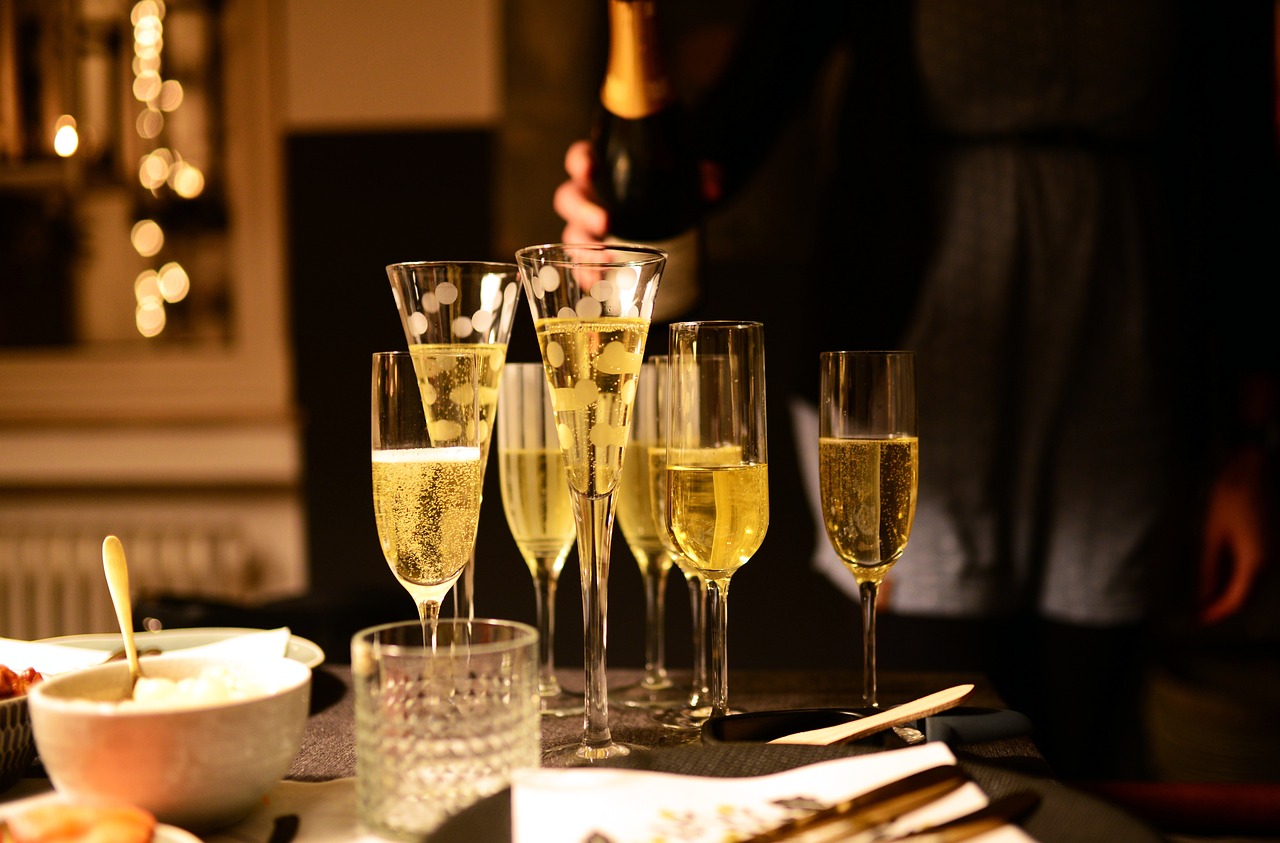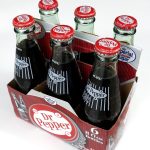In the world of celebrations, champagne reigns supreme, symbolizing joy, achievement, and camaraderie. Yet, even the most seasoned hosts face a common conundrum: how many glasses can one expect to pour from a single bottle of champagne? This seemingly simple question is crucial for planning any event where champagne is the centerpiece of the toast. Our comprehensive exploration into this topic not only answers the query but also delves into the nuances that affect the answer—such as the size of the glass and the type of occasion being celebrated.
With expertise grounded in the rich tradition of champagne production and serving etiquette, we aim to transform how you approach hosting gatherings, from intimate soirees to grand celebrations. Understanding the specifics of champagne servings will not only enhance your role as a meticulous planner but also ensure that each guest experiences the joy of the toast without the risk of shortage or excess.
As we uncork the secrets behind the perfect pour, we invite you to immerse yourself in a journey that promises to elevate your entertaining skills. Whether you’re a novice eager to learn the basics or a seasoned host looking to refine your knowledge, this article is your definitive guide to mastering champagne service. Join us as we explore the delicate balance between generosity and practicality, ensuring your next toast is remembered for its elegance and precision.
Champagne’s Role in Celebrations

Champagne has long been associated with marking monumental personal and cultural events. Its bubbly and bright taste encapsulates the excitement and cheer of celebrations.
Some prominent associations include:
- Weddings: No wedding is complete without the customary champagne toast between newlyweds. Champagne toasts are a wedding tradition representing good luck for the couple.
- New Year’s Eve: The stroke of midnight on New Year’s Eve is incomplete without champagne to ring in the new year. Nothing embodies fresh starts better than the popping of champagne corks.
- Birthdays: Major milestones like 21st birthdays or big decade birthdays like 30th, 40th, etc. call for champagne toasts in honor of the guest of honor.
- Retirement parties: Retirement is a new chapter in life, perfect for celebrating with refreshing glasses of crisp, bubbly champagne.
- Sporting event celebrations: Sports teams uncork champagne in victory lane or locker rooms to commemorate hard-earned wins and titles.
- Ship christenings: Christening new ships by cracking a champagne bottle on the hull is maritime tradition symbolizing good fortune.
- Achievements: Earning a degree, closing a big deal, or reaching major life goals deserves a champagne toast.
Champagne is present for life’s brightest moments, signifying success, hope, and new beginnings. Its elegance and refinement make champagne the consummate way to celebrate.
Champagne Bottle Sizes
Champagne bottles come in an array of sizes beyond the standard 750ml bottle. Different champagne bottle sizes support varied serving needs.
Standard 750ml Bottle
The 750ml bottle is the typical champagne bottle size. It holds around 25 ounces or 6-7 glasses of champagne. This is the most prevalent and economical size for personal consumption. 750ml provides enough for small gatherings without excess.
Smaller Sizes
Piccolo – 200ml: The Piccolo holds about 7 ounces or 2 servings. Piccolos are single-serve champagne bottles, perfect for individual treats.
Half-bottle – 375ml: Half-bottles contain around 12 ounces, equal to 3-4 glasses. Half-bottles work well when celebrating with 1-2 other people.
Larger Formats
Magnum – 1.5 liters: Magnums hold double the amount of a standard bottle, around 10-12 glasses. Magnums are great for larger parties of 6-8 people.
Jeroboam – 3 liters: Jeroboams are equivalent to 4 regular bottles and serve around 20 guests. Jeroboams make statement centerpieces at weddings.
Methuselah – 6 liters: Methuselahs contain 8 regular bottles, serving 40-50 people. These support receptions, company events, etc.
Salmanazar – 9 liters: Salmanazars equal 12 standard bottles and provide 60-75 glasses. Salmanazars cater to sizable gatherings and events.
Balthazar – 12 liters: Balthazars hold 16 regular bottles, serving between 80-100 guests. They make lavish additions to high-profile celebrations.
Nebuchadnezzar – 15 liters: These colossal bottles are equivalent to 20 standard ones, serving around 120-150 people. “Nebuchadnezzars” create an immense visual impact.
Standard Champagne Serving Size
On average, a 750ml bottle pours around 5-6 glasses of champagne. Typical champagne glass sizes are:
A standard 750ml bottle of champagne typically yields around 5 to 6 glasses of champagne, with each glass holding approximately 150ml. The number of glasses can vary slightly depending on the pour size and the type of glass used. Here is a general guide to the number of glasses you can get from different sizes of champagne bottles:
– Quarter bottle (20 cl): Serves 1 to 2 glasses.
– Half-bottle (37.5 cl): Serves 3 glasses.
– Classic bottle (75 cl): Serves 6 glasses.
– Magnum (1.5 L): Serves 12 glasses.
– Jeroboam (3 liters): Serves 24 glasses.
– Nebuchadnezzar (15 L): Serves 120 glasses.
– Melchizedec or Midas (30 L): Serves 240 glasses.
When planning for an event, it’s recommended to estimate at least one glass per person, considering that some guests may have more than one glass while others may not drink at all[4]. For a toast, one glass per guest is typically sufficient, and for mimosas or similar cocktails, you can expect to serve between six to eight drinks per bottle.
This equates to 120-150ml as an approximate champagne serving size per guest.
For events, allow for 5-6 servings per 750ml bottle when calculating needs. Factor in champagne for toasting if relevant.
Selection of Champagne Glasses
Choosing the right glassware enhances the champagne drinking experience. Main glass types include:
Champagne Flute
- Tall and slender
- Shows off bubbles and carbonation
- Preserves champagne’s signature fizz
- Best for young, dry champagnes
Champagne Tulip
- Combines flute and coupe shapes
- Directs aromas to the nose
- Allows appreciation of complex flavors
- Ideal for mature, vintage champagnes
Wide Tulip
- Wider bowl than standard tulip
- Highlights champagne’s crisp acidity
- Amplifies fruity notes
- Perfect for sweeter champagne styles
Champagne Coupe
- Broad, shallow bowl shaped like a saucer
- Beautiful and iconic visual
- Less ideal for preserving effervescence
- Great for emphasizing juicy, fruit-forward champagnes
Selecting a glass shape that suits the champagne style and tasting notes heightens the drinking experience.
Event Planning: Calculating Champagne Needs
Determining how much champagne to buy for events requires:
- Guest count – Use precise numbers if known.
- Serving size – Allow for 4-6 ounces per guest.
- Pour variance – Overestimate slightly to account for heavier pours.
- Toasts – Reserve extra bottles for multiple toasts if applicable.
- Mimosas – Factor in champagne for mimosas at brunches.
- Consumption – Account for higher drinking at celebrations versus wine tastings.
Having excess is better than running out. Leftover champagne keeps well sealed and refrigerated.
Serving Size Variability
Champagne serving sizes vary by:
- Event type: Serve 4-ounce pours at tastings. Allow 6 ounces at parties for full flute pours.
- Cultural differences: European serving sizes trend smaller at 3-4 ounces. Americans tend to prefer larger 5-6 ounce pours.
- Personal preferences: Give guests the option of smaller or larger pours if possible.
Consider your audience and occasion when gauging appropriate serving sizes.
Champagne Preservation
To enjoy leftover champagne:
- Store sealed in the fridge.
- Use specialty bottle stoppers to seal carbonation.
- Consume within 3-5 days.
- Avoid letting champagne go flat.
Proper storage retains champagne’s signature bubbles and crispness.
Champagne and Food Pairings
Champagne complements a variety of foods:
- Fresh seafood like oysters, sushi, and smoked salmon
- Mild cheeses including camembert and brie
- Salads and light appetizers
- Fruity desserts like fresh berries with whipped cream
- Buttery baked goods like croissants
The light body and acidity make champagne flexible with many cuisines. Play with food and champagne pairings to bring out new flavors.
Budgeting for Champagne
Ways to cut champagne costs:
- Buy non-vintage instead of vintage
- Choose sparkling wines like Cava, Prosecco, etc.
- Buy magnums or jeroboams instead of standard bottles
- Serve champagne for toasting only with other beverages
- Offer a champagne toast then switch to wine/beer
Scale guest pours, choose affordable brands, or limit champagne drinking occasions to keep within budget.
Conclusion
Champagne is the quintessential way to celebrate life’s happiest moments. With its celebratory associations and flavor profile, champagne sets the perfect festive mood for momentous events. Use this guide to pick the right bottle sizes, calculate quantities needed, choose suitable glassware, and pair champagne with foods. By following these tips, you can serve and enjoy champagne with confidence at your next special celebration. Cheers!
Susan Muskat is a professional chef with over 25 years of experience in the culinary industry. After working in some of the most prestigious restaurants in the world, she opened her own restaurant, Moose and Sadie’s, which quickly became a local favorite. Susan is also the author of a blog all about recipes, guidelines, cooking tips, and knowledge from professional chefs. She loves nothing more than sharing her passion for food with others.








